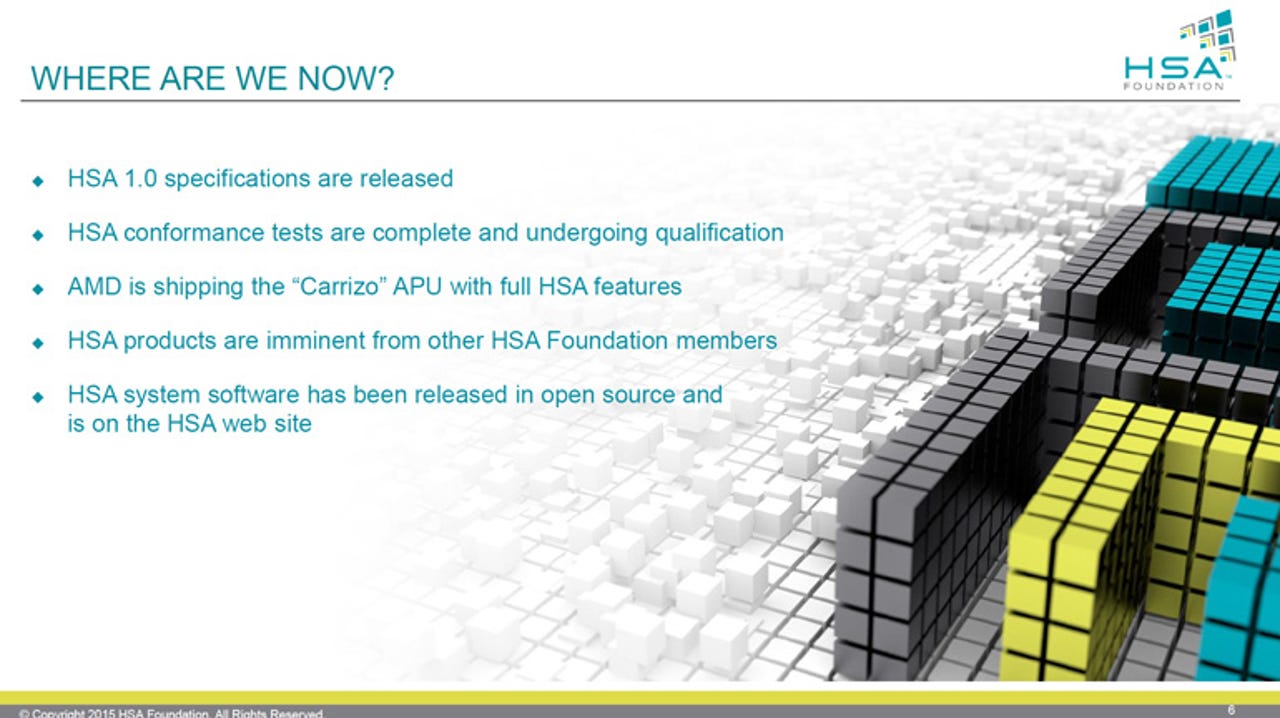More chipmakers to join AMD with heterogeneous designs


Chipmaker AMD is finally about to get some company in the HSA (Heterogeneous Systems Architecture) club. At the Linley Processor Conference this week, the HSA Foundation announced that other HSA products are 'imminent' including chips from MediaTek, and technology from IP providers Imagination and ARM.
Most chips already shift certain tasks from the CPU to other processing engines that can handle them more efficiently. But every chip designer takes its own approach to heterogeneous computing. That makes it tough to develop hardware and software to take advantage of all the different types of cores in a modern system-on-chip (SoC).
The purpose of the HSA (Heterogeneous Systems Architecture), a standard hardware and software platform, is to address this problem and unlock the potential of heterogeneous computing in everything from smartphones to servers. The foundation has been busy lately. In March it released version 1.0 of the HSA specification, and since then it has been testing platforms for certification, developing tools and APIs, and drafting guidelines for incorporating IP from multiple vendors into the same SoC. An updated version of the HSA specification is due out in first quarter of 2016.
But so far AMD is the only company that has released a full HSA 1.0 SoC. The sixth-generation Carrizo APU, branded as the A8, A10 and FX Series, is available in some laptops from Asus, Acer, HP, Lenovo and Toshiba. The catch is that there is virtually no commercial HSA software (when AMD launched Carrizo at Computex earlier this year, it demonstrated HSA acceleration on an internally-developed program called Looking Glass, which is a sort of visual search engine for video). AMD says that any software that uses OpenCL, the Khronos Group's standard framework for heterogeneous computing, will see some boost, but apps really needs to be built with HSA tools to get the full benefits. And with AMD's market share at around 5 percent by revenue, it lacks the heft to impose a standard and entice developers.
For the first time the foundation has confirmed that other members will deliver HSA chips. Chipmaker MediaTek already has its CorePilot software for scheduling tasks on the CPUs and GPU, but said it will roll out HSA chips is stages. Imagination said it will offer MIPS I-class and P-class CPUs, PowerVR GPUs and an HSA-compliant fabric starting in 2016. ARM is a bit more circumspect stating that it its developing CPU, GPU and interconnect IP with energy efficiency and full system coherency in a way that is "aligned with HSA coherency standards." But Imagination's Jim Nicholas, who was representing the foundation at the Linley Processor Conference, said that these were real commitments to develop HSA products.
Some big players are still missing. Qualcomm and Samsung were both absent from this week's announcement even though they are founding members of the HSA Foundation. Furthermore Apple, Intel and Nvidia aren't involved at all. Without the companies that provide the bulk of PC and server processors and mobile SoCs, it will be a challenge to establish HSA as an industry standard. There's little doubt that heterogeneous processing is the way forward for the industry--nearly every presentation touched on it in one way or another--it's just a question of how.
More coverage from the Linley Processor Conference 2015: